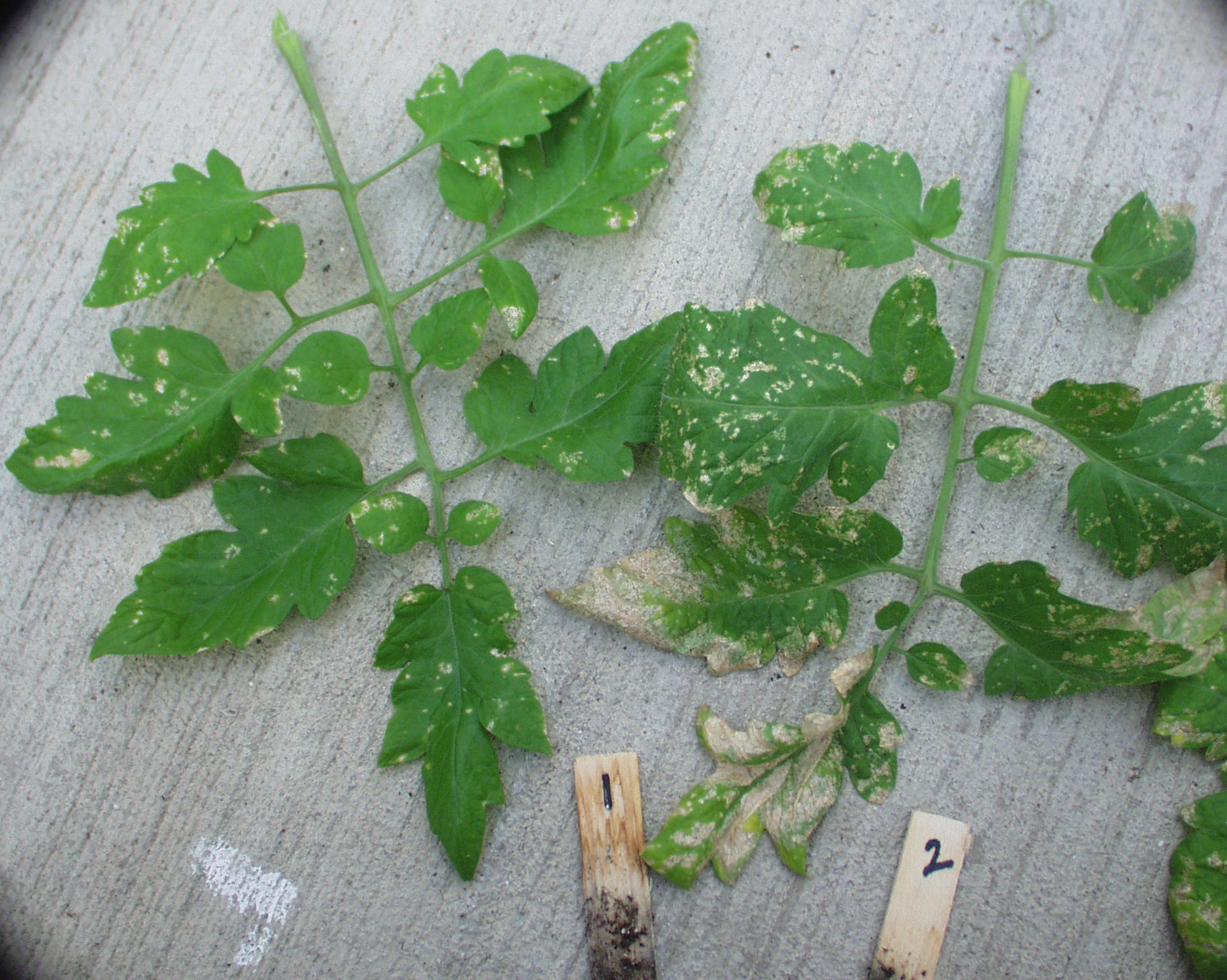
Vegetable Transplants: Protecting from Pests
Gardening is hot! Vegetable transplants are expected to betop sellers again this year. A quick scan of on-line seed catalogs shows many tomatovarieties still available but also many sold out, which may be an earlyindicator. Last year our local greenhouses had challenges meeting the high demandand since a repeat this spring appears likely, it will more important than everto make sure pests don’t get in the way.
Where possible, grow seed-grown plants in isolation from vegetativelypropagated material. Thrips, broad mites and aphids usually originate from othercrops (or weeds) at least in northern areas where migration from outdoors is notan issue in late winter and early spring.
Tospoviruses TSWV and INSV still have potential for causingserious trouble. The viruses can be carried to tomatoes, peppers and othervegetables from infected plants, which sometimes can include vegetatively propagatedornamentals (for practical purposes these viruses are not seed-borne), bywestern flower thrips.
Biocontrols should be released early and regularly monitoredfor quality. Dr. Rose Buitenhuis has compiled a guide on quality assurance forbiocontrols, available on-line at https://www.vinelandresearch.com/wp-content/uploads/2020/02/Grower-Guide.pdf
Some insecticides are specifically labeled foruse on vegetable transplants grown for sale. These include Marathon II (includinggenerics and other formulations), TriStar 8.5 SL (generic Quasar), Endeavor,Safari 20SG, Kontos, Altus, Ventigra, Hexygon IQ (or generic Hexcel), andTriact 70. Not all materials or uses are approved in all states/regions. Thereare additional products more broadly labeled for production uses. See labelsfor list of plants approved for treatment. Some of these products are rather selective,such as Endeavor for aphids or whiteflies or Hexygon IQ for spider mites, and compatiblewith some biocontrols. Note any plant sensitivities, such as Kontos on zonal geraniumor Ventigra on coleus ‘Rustic Orange.’

Dan Gilrein
Entomologist, Cornell Cooperative Extension of Suffolk CountyDan Gilrein is the Extension Entomologist with Cornell Cooperative Extension of Suffolk County at the Long Island Horticultural Research and Extension Center, Riverhead, NY since 1995 and previously served there as IPM Specialist with Cornell from 1987. In his current position he conducts applied research on control of arthropod pests in food crops and on ornamental plants, provides diagnostic services to the horticultural industries, and conducts educational programs and presentations for industry, government officials, civic groups and the public on pests and pest management.
